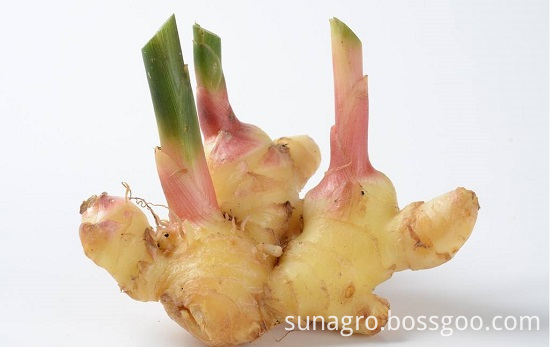Osmanthus fragrans is a kind of garden tree that combines greenery, landscaping and aromatherapy closely. Small potted osmanthus is more popular among the broad masses. However, because of the damage to the roots of the pots, potted osmanthus flowers are prone to poor growth, short flowering periods, weak aroma, and easy falling of flowers. In addition, due to the large weight of soil balls, there are problems such as difficulties in packing and transportation, and high costs. Its soilless culture technology came into being.
Osmanthus soilless potted plants should master the following six technical aspects:
Variety selection
The author selected two main cultivars, 'Little Leaf Buddha Top Ball' and 'Jin Mantang', from the Four Seasons Glutinous cultivars. 'Little Buddha Fodingzhu' has a short stature, full crown, small leaves, early flowering, and lots of flowers. It is suitable for small potted plants. 'Golden House' has a strong branching force and a large amount of crown growth. At least three new shoots are to be drawn every year. With strong branches, multiple sections, short pitches, and multiple flowering, it is suitable for medium-sized pots and can also be used for grafting osmanthus old piles of bonsai trees.
Matrix processing
Pinewood and Chinese fir sawdust were selected as soilless potted substrate of sweet-scented osmanthus. Because sawdust contains a large amount of carbon, it contains a small amount of nitrogen, and when it is not sufficiently cooked, it is easy to produce resin, rosin essence, tannins, etc. that are poisonous to osmanthus. Therefore, it must be processed before use. I used a high-nitrogen fermentation technique and added an acid scavenger to fix the volatilization or loss of excess nitrogen. The processing time is shorter than that of conventional natural fermentation by at least 30 days, and nutrient loss is less.
Water Management
The daily water management is completed by using a micro-spray system, which has the advantages of saving time, labor, water, and efficiency. A worker managing the switchgear can complete the micro-spraying watering task in 50 acres of potted plants every day.
Fertilizer coordination
In order to reduce production costs and reduce labor intensity and improve efficiency, the authors use long-term slow-release fertilizers as the main source of fertilizer for potted Osmanthus fragrans. Slow-release fertilizers can better control the release rate of nutrients, and its effective period is as long as 3 to 4 months. The method was to apply "resin-coated urea" + "resin-coated compound fertilizer" + "common sulfur-containing ternary compound fertilizer" when planting osmanthus in the upper pot in January and long-term in potted guinea-peanut in April. Another "resin-coated compound fertilizer" + "sulfur-containing ordinary ternary compound fertilizer" was applied again in August to meet the development and flowering requirements of potted osmanthus. In addition, from the beginning of March onwards, every 40 days or so, humic acid micro-fertilizers such as Ye Ye or Ji Nong are selected. A micro-spraying system is used to perform a top-dressing operation to increase the commercial quality of soilless potted osmanthus. Flower quality.
Pest control
Soilless potted osmanthus, insect pests are mainly locusts and spider mites, and crickets. Aphids feed on young shoots in summer and autumn, and it is easy to cause a large number of leaf defects, affecting the appearance and growth of potted plants. It can be sprayed with 4.5% high efficiency cypermethrin EC 2000 to 3000 times solution or 40% chlorpyrifos EC 1000 times solution.
Red spiders infested the leaves, and the victims suffered chlorosis and grayish-white spots. The leaves lost luster, causing serious defoliation and inability to flower. It can be sprayed with 15% Bailing EC from 1500 to 2000 times.蛴螬 Take osmanthus roots, resulting in dark leaves, potted growth weakness, and even the death of the whole plant, can choose to use 40% chlorpyrifos EC 1000 times and other watering roots.
Flowering regulation
Using potted osmanthus to facilitate the movement of favorable conditions, it will be in about 40 days before the Spring Festival, moved into the greenhouse, at the end of the night to increase the intimal insulation, control the temperature between 5 °C to 25 °C, day and night temperature difference maintained at above 10 °C. After 25 to 30 days of treatment, buds can be seen. Due to the high humidity in the greenhouse, it is easy to induce Osmanthus fragrans, can be used before the initial flowering 50% Propionine WP 1000 times or 50% mildewen WP 800 times spray 1 or 2 times. At the same time, humic acid micro-fertilizer such as “Jinong†500 times liquid can also be added to improve the flowering quality of potted osmanthus and prolong the flowering period.
Compared with garden-grown osmanthus, soilless potted osmanthus has the advantages of good commercial performance, light weight, convenient handling, hygienic appearance, and good economic benefits. Its weight is only 1/4 of that of potted osmanthus. Sawdust, which is the main substrate for soilless cultivation, is rich in resources and cheap. Its cost is only 1/7 of the price of peat and coco.
Our company mainly processes and exports Ginger, which is processed and sold throughout the year. The specifications are: 50g, 150g, 200g, 250g, 300g, 350g.The packages are calcium plastic boxes, cartons and mesh bags.Products are exported to Europe, the United States, South Korea, Malaysia, the Middle East and other countries and regions.The company relies on the good prestige and the excellent product quality has won the general customer the high praise, hoped has the export order the customer please to relate with us.In order to establish long-term business relations, mutual benefit and common development.

Fresh Ginger,Fresh Young Ginger,Fresh Mature Ginger,Bulk Fresh Ginger
Jining Sunagro Trade Co., Ltd. , http://www.sunagro-food.com
